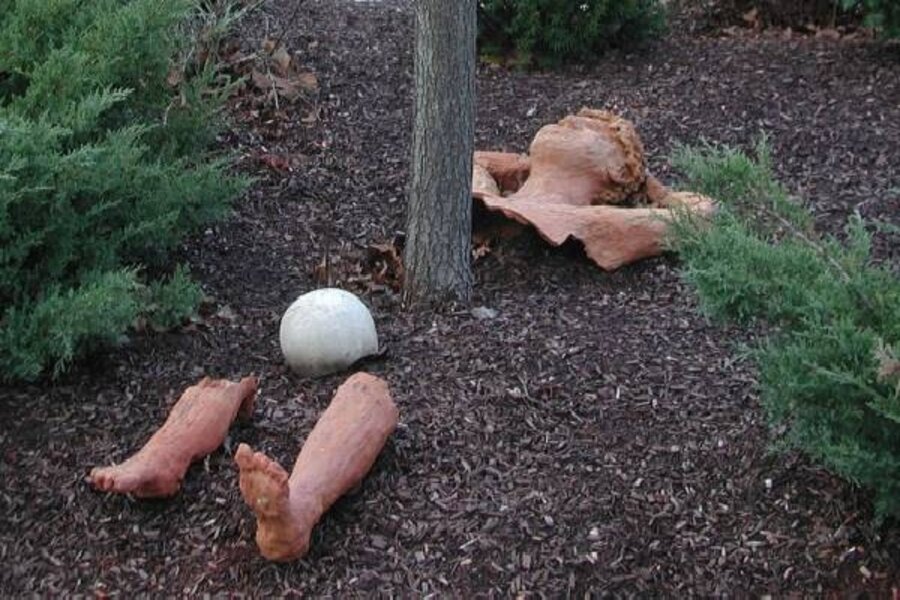All about mulch
Loading...
The dictionary says that mulch is anything you lay on top of the soil to protect it. Protect it from what, though?
Sun and rain, that's what. Sun beating down on bare soil results in temperatures hot enough to drive away friendly organisms, such as earthworms, and make roots uncomfortable. And battering rains seal the surface, so that rather than percolating into the ground, water skitters along the surface carrying with it bits of soil.
Look around at Mother Nature; she tries to keep the soil covered with either a dense stand of plants or a blanket of leaves.
Mulch also can make you a happier gardener, sparing you chores such as watering and weeding. That protective layer checks evaporation of moisture from the soil and smothers weeds.
ORGANIC OR SYNTHETIC?
There are two worlds of mulch, the organic world and the synthetic world. In the world of organic mulches are materials that are or once were living. In the synthetic world are black plastic and landscape fabrics. Landscape fabrics are synthetics that are woven or perforated to let water and some air penetrate, lessening problems with aeration.
The perceived advantage of synthetics over organics is that, because synthetics don't decompose, they will provide weed control forever or, at least, for a long, long time. In reality, black plastic begins to shred over time, letting weeds penetrate. And because the synthetic materials are so ugly, they are generally covered with a thin layer of some organic material, into which weeds eventually begin to creep and blow.
GO ORGANIC
Plenty of organic mulches are available, and they often can be had for free. Right out in your backyard or your neighbor's you will find one good material: grass clippings. Grass clippings are rich in nutrients, so mulching with them gives a "weed and feed" effect, as some marketing maven might say. Just make sure that any clippings you use are not from lawns treated with herbicide.
You also might have piles of fall leaves or pine needles. More good mulch.
Wood chips are an organic mulching material that you can often get for free, or you can buy them. Although poor in nutrients, wood chips are relatively long-lasting on the soil so are particularly good for using beneath trees and shrubs, and around perennial flowers.
Similar in all respects to wood chips is sawdust. Paper, another good organic mulch, is another wood product. Although not very attractive, a few layers of paper — either newspaper, commercial paper mulch or building paper ("red rosin paper") — will kill weeds and seal in moisture. Cover the paper with something more attractive, such as wood chips, to hold it down and hide it.
Straw and hay are also excellent mulches. Straw is just stems and leaves, but hay contains seed heads, which can germinate and become weeds. These weeds may not be a problem if you occasionally fluff up the hay mulch to uproot the weed seedlings while they are still small.
Salt hay comes from wetlands, so its seeds will not thrive in garden soils.
Finally, we come to designer organic mulches, not necessarily better than other organic mulches but conveying a certain look. Buckwheat hulls and cocoa bean hulls look pretty blanketing the ground with a uniform, pebbly brown texture. Expect to pay designer prices for designer mulches.
The only organic mulch to avoid is peat moss. The problem with peat is that once it dries, it's hard to wet again, during which time it is dusty and repels water.
TIMING YOUR MULCHING
The best time to lay down any organic mulch is after a rain or watering, when the soil is thoroughly moist. Otherwise, that much more water will be needed to wet the mulch before water gets down to plant roots.
Put the mulch on thickly — 4 inches for fluffy materials or 2 inches for denser materials — but not right up against succulent young stems or they are apt to rot.
All organic mulches do continuously decompose, with mulches derived from younger plant material disappearing fastest. Don't begrudge organic mulches for disappearing, though, because as they decompose, they help fluff up and feed the soil beneath.
Editor's note: Here's more about gardening: The main Monitor gardening page. Our blog archive. Our RSS feed.
You may also want to visit Gardening With the Monitor on Flickr. If you join the group (it's free), you can upload your garden photos (and possibly win a prize). Join the discussions and get answers to your gardening questions.
And finally, you can now follow us on Twitter.





